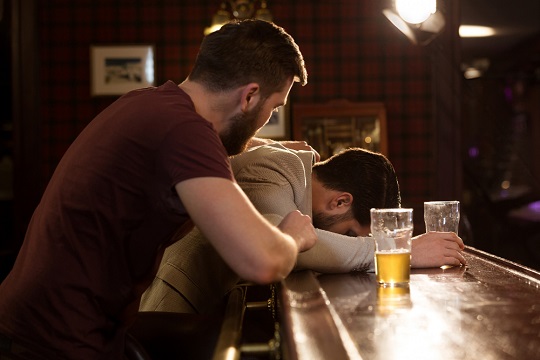Drug addiction seems inexhaustible, which gives rise to societal debates but continues to be the subject of many reductive representations, even received ideas. The gaze cast on the drug user can be medical, psychological, social, political, legal, or moral…

it is too rarely transversal. How can professionals confronted with this question find useful benchmarks for their practice? This book aims to provide people working directly or indirectly with drug addicts with validated knowledge.

It means proven by experience but also with questions likely to enrich their thinking as professionals and citizens alike. Based on facts and scientific data, it offers a historical, sociological, medical, and legislative evolution of considering drug users in France.

Breaking with the search for explanations and interpretations of drug addiction phenomena, it finally opens up avenues for possible interventions based on human relationships and confrontation with the user, this “Other,” who is ultimately more similar than different.

Non-Pharmacological Interventions
Non-pharmacological interventions, including physical and psychological strategies to reduce pain, can be used as a first-line measure and adjunct to multi-modality treatment. Non-pharmacological interventions include:
- Distraction, relaxation, or the use of imagery.
- Breathing techniques.
- Music therapy.
- Spiritual practices.
- Modify of the environment (such as lowering the light and noise).
- Change position.
- Application of cold or heat and transcutaneous electrical neurostimulation .
Of all these non-pharmacological interventions, only the application of TENS requires a medical prescription. Because effective pain management is a significant medical issue, the Joint Commission requires hospitals to have a system to handle patient pain reports. However, the Joint Commission guidelines do not require a grade 0 pain intensity goal for pain management. Instead, they require a patient-centered approach that considers the risks and benefits of the strategies used to relieve pain and the potential for dependency and abuse.
Alcohol Consumption
The Joint Commission also supports a multimodal approach that uses pharmacological and non-pharmacological strategies to effectively treat pain. The multimodal approach to treating pain consists of using two or more drugs with different mechanisms of action and non-pharmacological interventions.
Alcohol Treatment
This patient-centered approach is customized to meet the needs of each patient and often results in lower doses of analgesics and fewer adverse reactions. This study aimed to assess clinical nurses from a tertiary care medical center’s global knowledge, use of non-pharmacological interventions, and the efficacy of pain treatment.

Methods
This study relied on Watson’s theory of human care for the theoretical framework. Watson’s theory describes a nursing practice with many parts in a relationship between care, holism, and the scientific method.
It supports the acceptance by nurses of the patient’s assessment of their pain, the importance of comfort in each patient’s life, and a personalized response for each one. This descriptive study used quantitative methods and cross-sectional data collection involving a convenience sample of nurses. Triangulation was used with three different data collection methods to give it more rigor.
Frame And Sample
The setting for this study was a large tertiary care medical center in the US Midwest. Although the center has 31 inpatient nursing units, the study focused on surgical and orthopedic units. These two units were selected based on similarity in size and the pain management needs of the patient population. The participation of the nurses was voluntary, and no name or personal identifying information was recorded.

 After institutional review board approval, an online examine was sent to 104 nurses from the two nursing units. Before sending the survey, two educators, four nurses, and the center’s nursing research committee established the content validity of the survey method by reviewing it and reaching a consensus.
After institutional review board approval, an online examine was sent to 104 nurses from the two nursing units. Before sending the survey, two educators, four nurses, and the center’s nursing research committee established the content validity of the survey method by reviewing it and reaching a consensus. Therefore, education on this strategy and its benefits may prompt nurses to request this intervention when reporting a patient’s pain.
Therefore, education on this strategy and its benefits may prompt nurses to request this intervention when reporting a patient’s pain. There are two types of psychological disorders, both of which are very different:
There are two types of psychological disorders, both of which are very different: All these aspects are those that are behind the symptoms and those that the psychotherapeutic treatment addresses individually with the affected person.
All these aspects are those that are behind the symptoms and those that the psychotherapeutic treatment addresses individually with the affected person. The Advantages Of Drugs And Psychological Treatments
The Advantages Of Drugs And Psychological Treatments They Have A High Cost
They Have A High Cost The life cycle was achieved, which translates into the incorporation of the knowledge obtained in the work sessions on the dynamics of the families involved, better preparation of the families, as well as a favorable modification of their diagnoses of family functionality determined by the Family Functioning Perception Test (FF-SIL). The program’s progress was classified as positive and exciting, according to the PNI technique (positive, negative, and interesting), and its participants always maintained a high emotional state and a willingness to participate. It was effective, as demonstrated by comparing the results of applying the instrument and the technique selected for this purpose. Its impact was also positive among the participants and family members, who expressed their expectations of improving their lives as a family group.
The life cycle was achieved, which translates into the incorporation of the knowledge obtained in the work sessions on the dynamics of the families involved, better preparation of the families, as well as a favorable modification of their diagnoses of family functionality determined by the Family Functioning Perception Test (FF-SIL). The program’s progress was classified as positive and exciting, according to the PNI technique (positive, negative, and interesting), and its participants always maintained a high emotional state and a willingness to participate. It was effective, as demonstrated by comparing the results of applying the instrument and the technique selected for this purpose. Its impact was also positive among the participants and family members, who expressed their expectations of improving their lives as a family group.